- Defense Web TV
- Contact advertising
- Send Press Release
- Air Defense Vehicles
- Man-Portable Air Defense Systems
- Self-propelled anti-aircraft guns
- Anti-tank guided missiles
- Rocket launcher
- Tracked anti-tank vehicles
- Wheeled anti-tank vehicles
- Amphibious All-Terrain Vehicles
- Fire Support Vehicles
- Multi-Role Armored Vehicles
- Reconnaissance Vehicles
- Tank Destroyer
- Tracked APC vehicles
- Wheeled APC Vehicles
- Artillery Reconnaissance Vehicles
- Mortar Carrier
- Multiple Launch Rocket Systems
- Non Categories
- Radar Vehicles
- Self-propelled howitzers
- Towed Howitzer|Guns
- Command Post
- Communication Vehicles and Systems
- Electronic Warfare
- Armored Recovery Vehicles
- Bridge layer
- CBRN Vehicles
- Demining Vehicles
- Engineer Vehicles
- Mine Laying Systems
- Airborne Vehicles
- Tracked vehicles
- Wheeled Vehicles
- Amphibious Tanks
- Light Tanks
- Main Battle tanks
- Ballistic Missiles
- Cruise missiles
- Hypersonic Missiles
- ICBM Intercontinental ballistic missiles
- Tactical Missiles
- Light Tactical Vehicles
- Logistic Trucks
- Security Vehicles
- Air Defense Radars
- Counter battery radars
- Ground Radars
- Mobile Radar Systems
- Unmanned Aerial Vehicles
- Unmanned Ground Vehicles
- Assault rifles
- Field Equipment
- Grenade Launchers
- Machine Guns
- Sniper Rifles
- Sub-Machine Guns
- Turrets - Weapon Stations
- Aircraft carriers
- Amphibious Assault ship
- Amphibious transport dock
- Landing Craft
- Auxiliary ships
- Destroyers/Cruisers
- Naval Aircraft
- Naval Combat Equipment
- Patrol vessels
- Rigid Inflatable Boat
- Attack submarines
- Cruise missile submarines
- UAV (Unmanned Aerial Vehicles)
- USV (Unmanned Surface Vessels)
- UUV (Unmanned Underwater Vehicles)
- Automatic Cannons
- Close In Weapon System
- Civil aircraft
- Attack Helicopters
- Electronic Warfare Helicopters
- Transport Helicopters
- Command and control
- Electronic warfare
- Reconnaissance
- Trainer aircraft
- Transport aircraft
- Unmanned aircraft system
- Libya conflict day by day
- Operation Serval in Mali French Army
- Sangaris operation Central African Republic
- Sangaris opération militaire République Centreafrique
- Ukraine - Russia conflict
- Russia Ukraine War 2022
- HAMAS - Israel War 2023
- Syria conflict news
- Defence & Security Industry Technology
- Armies in the world
- Analysis Defense and Security Industry
- Naval Exercises
- Naval Technology
- Aviation defence industry technology
- Air Force in the world


Breaking News
- Russia Launches Enhanced Vikhr-1 Missile with E...
- HMS Portland Becomes Second Royal Navy Frigate ...
- British Intelligence Reveals Russia's Drone and...
- Ukrainian Armed Forces Strike Russian 2S43 Malv...
- British Army Successfully Tests a Radio Wave We...
- Austal Australia wins contract for Two New Evol...
- BAE Systems Secures Contract for Cold Weather A...
- Norway Strengthens Air Defence with New Order f...
- Ukraine Receives Its Sixth IRIS-T SLM Air Defen...
- US Authorizes Egypt to Modernize its M1A1 Fleet...
Lockheed Martin’s X-59 QueSST experimental aircraft reaches key step toward first supersonic flight .
- 7 Nov, 2024 - 14:26
- Defense News Aerospace 2024
On November 6, 2024, the NASA announced that Lockheed Martin’s X-59 Quiet Supersonic Technology (X-59 QueSST) experimental aircraft reached a critical development milestone with its first engine run at Lockheed Martin's Skunk Works facility in Palmdale, California. This milestone marks the beginning of engine-run tests, which commenced on October 30, 2024, allowing the X-59 team to confirm that the aircraft’s systems function effectively when powered by its own engine. Follow Army Recognition on Google News at this link

The Lockheed Martin X-59 QueSST’s engine, a modified F414-GE-100, generates 98 kN of thrust and is positioned atop the aircraft to reduce noise impact. (Picture source: NASA)
During earlier stages, the team used external power sources to conduct preliminary tests. These tests are integral to NASA’s X-59 QueSST mission, aimed at reducing the noise impact of supersonic flight over land, potentially informing future regulations for commercial supersonic travel as well as leading to improvements in stealth aircraft.
Engine-run tests are being conducted in phases. In the initial phase, the X-59’s engine was rotated at a low speed without ignition to detect any leaks and confirm that systems were synchronized and operating correctly. Subsequently, the team fueled the aircraft and conducted low-power engine tests, ensuring that the engine, along with hydraulic, electrical, and environmental control systems, operated without malfunctions or leaks when powered directly by the engine. Jay Brandon, NASA's X-59 chief engineer, described this stage as preliminary verification to ensure that all systems were operational before advancing to full engine operation.
Designed to mitigate sonic booms, the X-59 is intended to produce a quieter sonic effect, which NASA describes as a “thump,” even at supersonic speeds. This feature is central to the X-59 QueSST mission’s goal of assessing public perception of reduced noise, with data that could eventually help regulators review current restrictions on supersonic flight over land.
The X-59’s engine, a modified F414-GE-100, generates 98 kN of thrust and is positioned atop the aircraft to reduce noise impact. This design enables the X-59 to reach Mach 1.4, or roughly 1,488 kilometers per hour, at an altitude of approximately 16,764 meters. The engine’s placement and thrust facilitate meeting mission objectives by enabling supersonic flight with reduced noise impact at ground level.
These tests are part of a series of ground evaluations required for the aircraft’s safe progression toward flight. Following initial engine tests, the team will proceed with more rigorous evaluations, including high-power tests, rapid throttle changes, and flight condition simulations. This phase will lead to aluminum bird testing, during which the aircraft’s systems are monitored under various operating scenarios, including normal and failure conditions. The team will conduct taxi tests, during which the X-59 will move on the ground to verify its handling capabilities.

Designed to mitigate sonic booms, the X-59 is intended to produce a quieter sonic effect, which NASA describes as a “thump,” even at supersonic speeds. (Picture source: Lockheed Martin)
The X-59, measuring approximately 30.4 meters in length with a wingspan of 9 meters, has been in development since NASA awarded Lockheed Martin a preliminary design contract in 2016. Although initially projected to begin flight tests in 2021, the schedule has been adjusted, with the first flight now expected in early 2025. The X-59’s design includes an enhanced flight vision system (EVS) with an external vision system (XVS) that provides a forward view to compensate for the limited visibility due to the aircraft’s extended nose. Supplied by Collins Aerospace, this visibility technology integrates multispectral imaging systems to enhance situational awareness, particularly during landing.
With a target cruising speed of Mach 1.42 (around 1,510 kilometers per hour), the X-59 aims to reach a ground noise level of 75 effective perceived noise decibels (EPNdB), comparable to the sound of a car door closing. This would be significantly quieter than the Concorde’s supersonic boom, estimated between 105 and 110 EPNdB. By using a long, narrow airframe and a top-mounted engine intake, the X-59’s design is intended to reduce the intensity of the sonic boom experienced on the ground. In addition to its primary noise reduction features, the aircraft is equipped with components such as a cockpit, canopy, and ejection seat from a Northrop T-38, and landing gear from an F-16.
The X-59 QueSST mission’s testing phase will include community evaluations across U.S. cities from 2023 to 2025. These tests will collect feedback on noise perception from residents, contributing data that will be submitted to the International Civil Aviation Organization (ICAO) and the Federal Aviation Administration (FAA) by 2027. These findings could inform regulatory discussions regarding commercial supersonic flight over land, potentially opening new supersonic travel routes by 2028.
The X-59 development has comprised multiple stages, including wind tunnel testing, structural assembly, and system integration conducted over recent years. With its 98 kN of thrust, the aircraft is projected to reach a maximum speed of Mach 1.5 or 1,593 kilometers per hour, with a cruise speed of Mach 1.42 or 1,510 kilometers per hour at 16,764 meters. Further evaluations will proceed as NASA continues toward the planned first flight, currently targeted for early 2025.
Curiously, the engine-run tests of the X-59 are taking place at Lockheed Martin's Skunk Works facility in Palmdale, California, a site also linked to the development of another high-profile and highly classified project: the SR-72 hypersonic aircraft. The X-59, which seeks to achieve quieter supersonic flight, involves advanced noise-reduction technologies, a modified engine configuration, and complex system integrations—features that are also pertinent to hypersonic and high-speed aircraft design. As the SR-72 aims to reach speeds of up to Mach 6, insights into high-speed aerodynamics, minimizing ground-level impact, and integrating advanced propulsion systems will be crucial. Observations from the X-59’s testing could support approaches to challenges anticipated in the SR-72 program, such as maintaining structural integrity at high speeds and managing the thermal and acoustic effects associated with hypersonic flight. The X-59’s tests, therefore, may contribute valuable data and engineering insights for the SR-72’s development trajectory.

With a target cruising speed of Mach 1.42 (around 1,510 kilometers per hour), the X-59 aims to reach a ground noise level of 75 effective perceived noise decibels (EPNdB), comparable to the sound of a car door closing. (Picture source: Lockheed Martin)
- Cookie policy
- Legal information
NASA’s Mysterious X-59 Supersonic Experimental Aircraft is Finally Gearing Up For Its First Flight
NASA’s experimental X-59 aircraft, an ultra-fast aircraft designed for low-noise flight over land, is finally undergoing preparations for what will be its first flight in 2024.
Designed to travel faster than sound while reducing the intensity of the resulting sonic booms, something that has dramatically limited the use of supersonic military and commercial craft, the X-59 was built by the infamous Lockheed-Martin Skunk Works, an engineering think tank with a historically impressive track record of developing advanced aircraft for a myriad of applications.
A previous test flight of the X-59 had been expected to take place sometime earlier this year. However, continued testing and experimentation at the company’s Palmdale, California facility resulted in the delay. Now, it appears that the project is wrapping up those efforts, with an exact date in 2024 expected to be announced soon.

X-59 Experimental Aircraft Designed to Do the Seemingly Impossible.
When an aircraft’s speed approaches the speed of sound, compression waves generated in front of the plane get closer and closer together. When the aircraft “breaks” the sound barrier, these waves collapse violently, causing a loud explosion often called a sonic boom. When these sonic booms happen over the ocean, they are harmless. Still, sonic booms that happen over populated areas can result in rattled windows, broken glass, raging car alarms, and countless frayed nerves.
Hoping to reduce these booms from a loud explosion to the equivalent of a car door closing, NASA and Skunk Works started working on the X-59 experimental aircraft. The Debrief covered the years of testing and technology behind the effort in great detail earlier this year, resulting in a vehicle hoping to do the impossible in 2024.

Aircraft Made up of Parts from Existing Aircraft, Making Safety Paramount
Notably, the X-59 is not an entirely new airframe from top to bottom. Instead, it is cobbled together with systems and components from other existing aircraft. For example, the X-59 copped its landing gear from an F-16, while its life support systems were taken from an F-15.
According to the press release announcing the rescheduled 2024 launch, the team recently installed the “finishing touches” to the X-59’s tail structure, which “allowed them to finalize its electrical wiring and proceed to critical ground tests,” after which it will be moved from the assembly facility to the flight line to perform structural testing.
Once in the air, the vehicle is expected to fly over “several communities” to gather data on how people react to the significantly reduced sonic booms. Afterward, NASA says they will share their findings with domestic and international regulators “to potentially adjust rules that currently prohibit commercial supersonic flight over land.”

Like many vehicles designed for test purposes, the X-59 experimental aircraft has no proven safety record. According to the engineers involved, this means that safety remains their highest priority, so they have several final stages they expect to go through before actually taking flight.

Meals on Heels: These Fish Have Evolved to Taste with their Feet
Still, the goal of supersonic flight without huge sonic booms is compelling, and NASA says the team working on the aircraft is driven to meet the 2024 launch goal.
Christopher Plain is a Science Fiction and Fantasy novelist and Head Science Writer at The Debrief. Follow and connect with him on X , learn about his books at plainfiction.com , or email him directly at [email protected] .

Suggested Searches
- Climate Change
- Expedition 64
- Mars perseverance
- SpaceX Crew-2
- International Space Station
- View All Topics A-Z
Humans in Space
Earth & climate, the solar system, the universe.
- Aeronautics
Learning Resources
News & events.

NASA’s Webb Reveals Smallest Asteroids Yet Found in Main Asteroid Belt
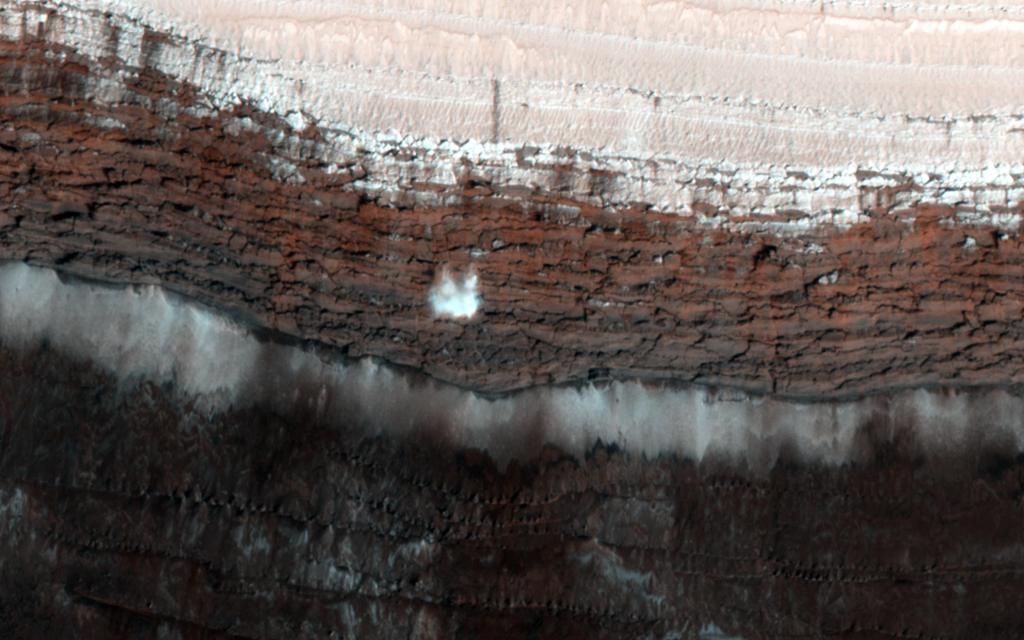
Avalanches, Icy Explosions, and Dunes: NASA Is Tracking New Year on Mars

What’s Up: December 2024 Skywatching Tips from NASA
- Search All NASA Missions
- A to Z List of Missions
- Upcoming Launches and Landings
- Spaceships and Rockets
- Communicating with Missions
- James Webb Space Telescope
- Hubble Space Telescope
- Why Go to Space
- Commercial Space
- Destinations
- Living in Space
- Explore Earth Science
- Earth, Our Planet
- Earth Science in Action
- Earth Multimedia
- Earth Science Researchers
- Pluto & Dwarf Planets
- Asteroids, Comets & Meteors
- The Kuiper Belt
- The Oort Cloud
- Skywatching
- The Search for Life in the Universe
- Black Holes
- The Big Bang
- Dark Energy & Dark Matter
- Earth Science
- Planetary Science
- Astrophysics & Space Science
- The Sun & Heliophysics
- Biological & Physical Sciences
- Lunar Science
- Citizen Science
- Astromaterials
- Aeronautics Research
- Human Space Travel Research
- Science in the Air
- NASA Aircraft
- Flight Innovation
- Supersonic Flight
- Air Traffic Solutions
- Green Aviation Tech
- Drones & You
- Technology Transfer & Spinoffs
- Space Travel Technology
- Technology Living in Space
- Manufacturing and Materials
- Science Instruments
- For Kids and Students
- For Educators
- For Colleges and Universities
- For Professionals
- Science for Everyone
- Requests for Exhibits, Artifacts, or Speakers
- STEM Engagement at NASA
- NASA's Impacts
- Centers and Facilities
- Directorates
- Organizations
- People of NASA
- Internships
- Our History
- Doing Business with NASA
- Get Involved
NASA en Español
- Aeronáutica
- Ciencias Terrestres
- Sistema Solar
- All NASA News
- Video Series on NASA+
- Newsletters
- Social Media
- Media Resources
- Upcoming Launches & Landings
- Virtual Guest Program
- Image of the Day
- Sounds and Ringtones
- Interactives
- STEM Multimedia
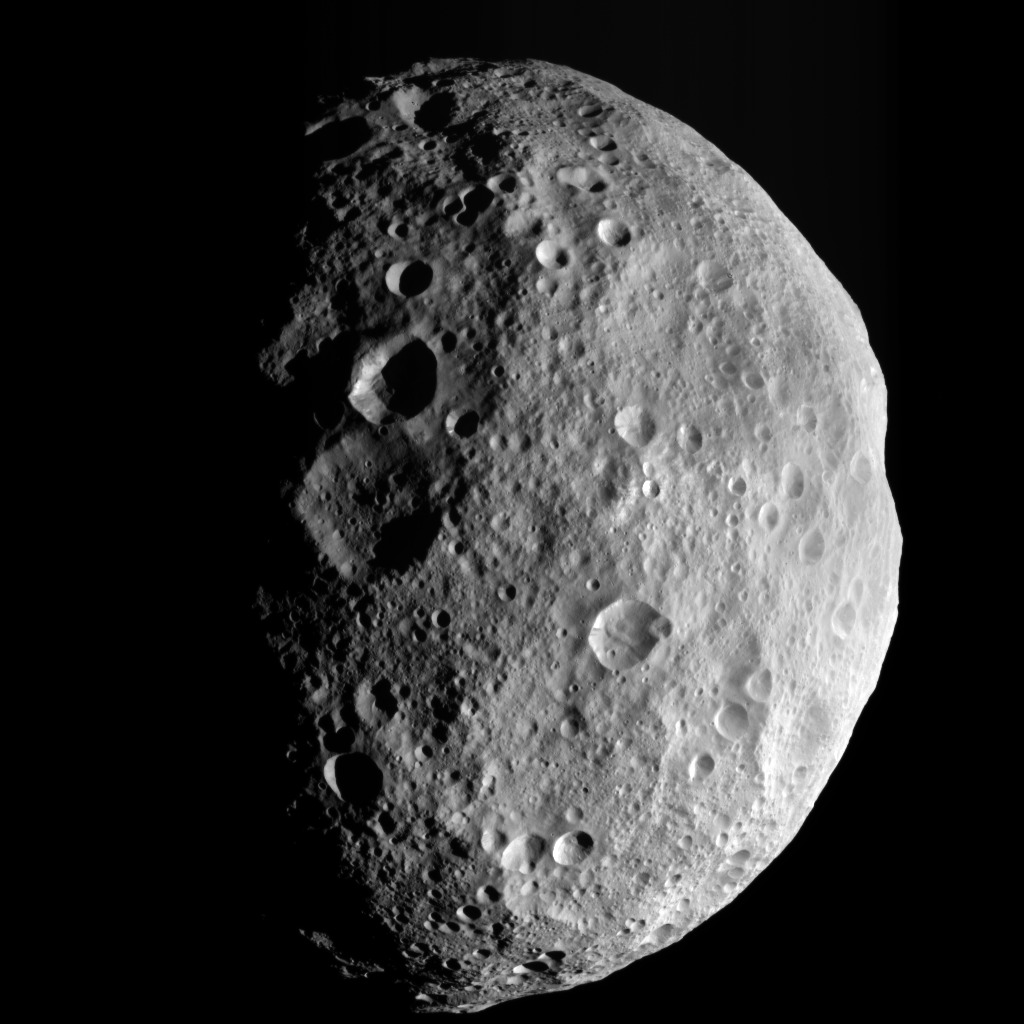
Lab Work Digs Into Gullies Seen on Giant Asteroid Vesta by NASA’s Dawn

Hubble Spies a Cosmic Eye

Station Science Top News: Dec. 20, 2024

Artemis II Core Stage Vertical Integration Begins at NASA Kennedy
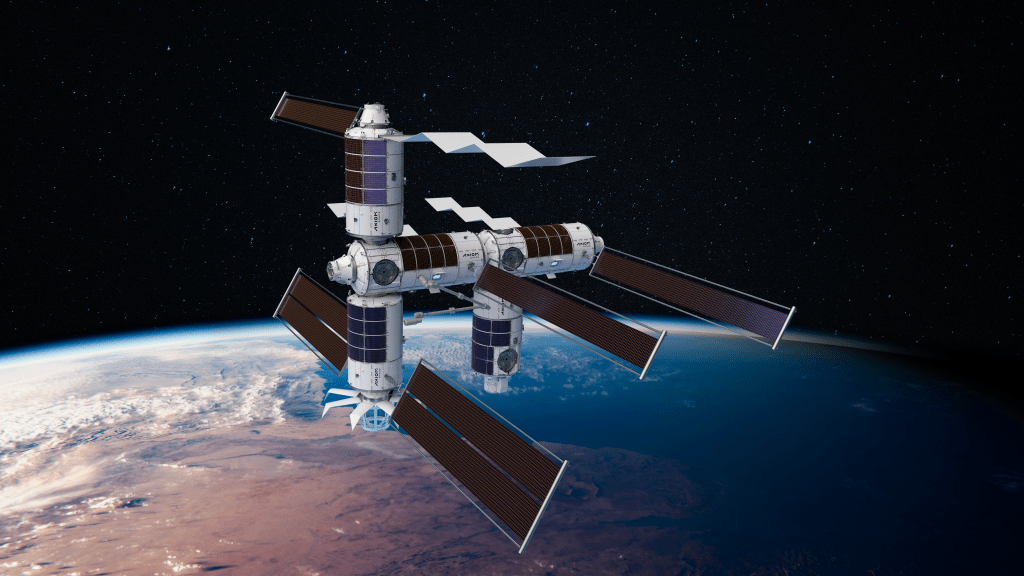
NASA, Axiom Space Change Assembly Order of Commercial Space Station

Cutting-Edge Satellite Tracks Lake Water Levels in Ohio River Basin

NASA-DOD Study: Saltwater to Widely Taint Coastal Groundwater by 2100

NASA Study: Crops, Forests Responding to Changing Rainfall Patterns

NASA Finds ‘Sideways’ Black Hole Using Legacy Data, New Techniques

NASA Open Science Reveals Sounds of Space

Amendment 89: D.3 APRA Mandatory NOIs Due Date extended to January 6, 2025

F.5 FINESST: SMD’s Graduate Student Research Clarifications and Corrections

ROSES-24 A.62 FarmFlux Science Team Updates

2024: NASA Armstrong Prepares for Future Innovative Research Efforts

NASA, Notre Dame Connect Students to Inspire STEM Careers

NASA Flight Rerouting Tool Curbs Delays, Emissions

NASA’s New Deep Space Network Antenna Has Its Crowning Moment

Amendment 88: A.52 Advanced Component Technology Text and Due Dates Released

NASA Partners with US Patent and Trademark Office to Advance Technology Transfer
Nasa knows: how does the sun behave (grades 5-8).
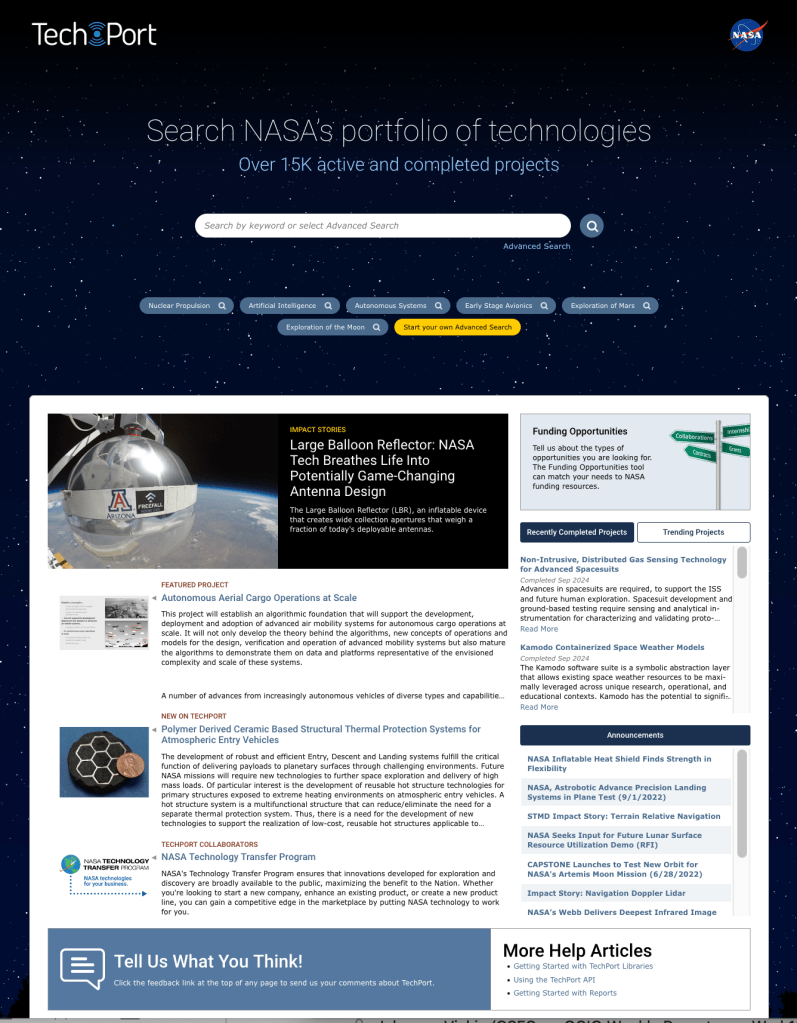
Five Ways to Explore NASA’s Portfolio of Technologies with TechPort 4.0
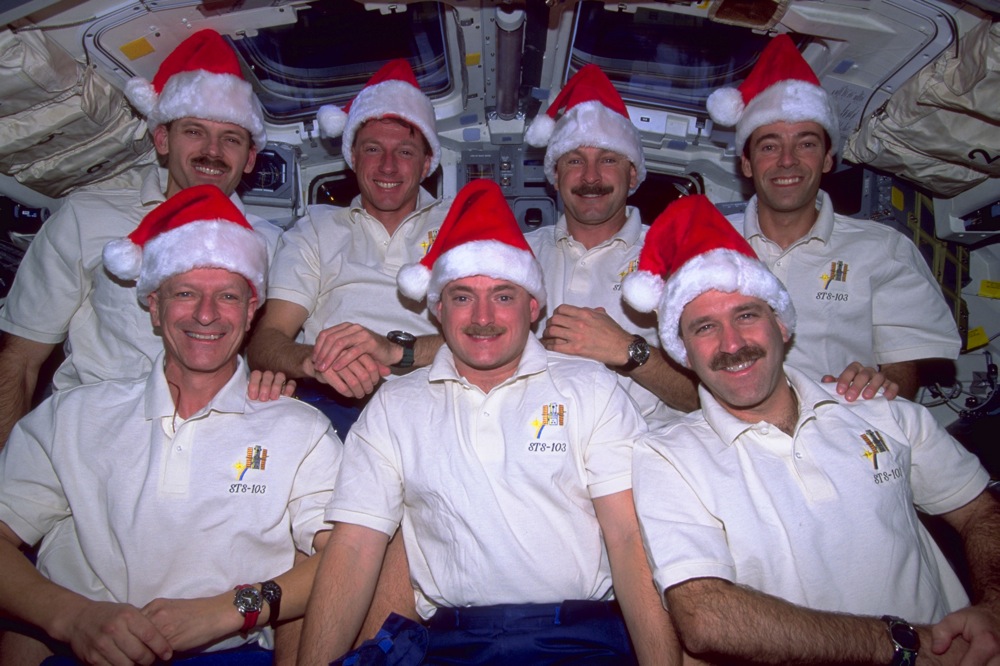
25 Years Ago: STS-103, The Hubble Servicing Mission-3A

La NASA identifica causa de pérdida de material del escudo térmico de Orion de Artemis I

Preguntas frecuentes: La verdadera historia del cuidado de la salud de los astronautas en el espacio

El X-59 enciende su motor por primera vez rumbo al despegue
X-59 fires up its engine for first time on its way to takeoff, amber philman-blair, nasa langley public affairs specialist.
Lee esta historia en español aquí.
NASA’s Quesst mission marked a major milestone with the start of tests on the engine that will power the quiet supersonic X-59 experimental aircraft.
These engine-run tests, which began Oct. 30, allow the X-59 team to verify the aircraft’s systems are working together while powered by its own engine. In previous tests, the X-59 used external sources for power. The engine-run tests set the stage for the next phase of the experimental aircraft’s progress toward flight.
The X-59 team is conducting the engine-run tests in phases. In this first phase, the engine rotated at a relatively low speed without ignition to check for leaks and ensure all systems are communicating properly. The team then fueled the aircraft and began testing the engine at low power, with the goal of verifying that it and other aircraft systems operate without anomalies or leaks while on engine power.

“The first phase of the engine tests was really a warmup to make sure that everything looked good prior to running the engine,” said Jay Brandon, NASA’s X-59 chief engineer. “Then we moved to the actual first engine start. That took the engine out of the preservation mode that it had been in since installation on the aircraft. It was the first check to see that it was operating properly and that all the systems it impacted – hydraulics, electrical system, environmental control systems, etc. – seemed to be working.”
The X-59 will generate a quieter thump rather than a loud boom while flying faster than the speed of sound. The aircraft is the centerpiece of NASA’s Quesst mission, which will gather data on how people perceive these thumps, providing regulators with information that could help lift current bans on commercial supersonic flight over land.
The engine, a modified F414-GE-100, packs 22,000 pounds of thrust, which will enable the X-59 to achieve the desired cruising speed of Mach 1.4 (925 miles per hour) at an altitude of approximately 55,000 feet. It sits in a nontraditional spot – atop the aircraft — to aid in making the X-59 quieter.
Engine runs are part of a series of integrated ground tests needed to ensure safe flight and successful achievement of mission goals. Because of the challenges involved with reaching this critical phase of testing, the X-59’s first flight is now expected in early 2025. The team will continue progressing through critical ground tests and address any technical issues discovered with this one-of-a-kind, experimental aircraft. The X-59 team will have a more specific first flight date as these tests are successfully completed.
The testing is taking place at Lockheed Martin’s Skunk Works facility in Palmdale, California. During later phases, the team will test the aircraft at high power with rapid throttle changes, followed by simulating the conditions of an actual flight.

“The success of these runs will be the start of the culmination of the last eight years of my career,” said Paul Dees, NASA’s deputy propulsion lead for the X-59. “This isn’t the end of the excitement but a small steppingstone to the beginning. It’s like the first note of a symphony, where years of teamwork behind the scenes are now being put to the test to prove our efforts have been effective, and the notes will continue to play a harmonious song to flight.”
After the engine runs, the X-59 team will move to aluminum bird testing, where data will be fed to the aircraft under both normal and failure conditions. The team will then proceed with a series of taxi tests, where the aircraft will be put in motion on the ground. These tests will be followed by final preparations for first flight.
Explore More
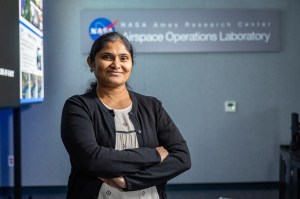
How a NASA Senior Database Administrator Manifested her Dream Job
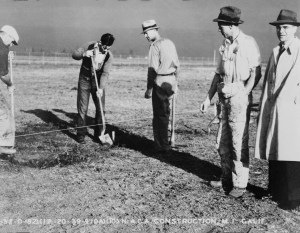

NASA Ames Astrogram – December 2024

NASA’s Ames Research Center Celebrates 85 Years of Innovation
Discover more topics from nasa.

Humans In Space

- Quesst: The Vehicle
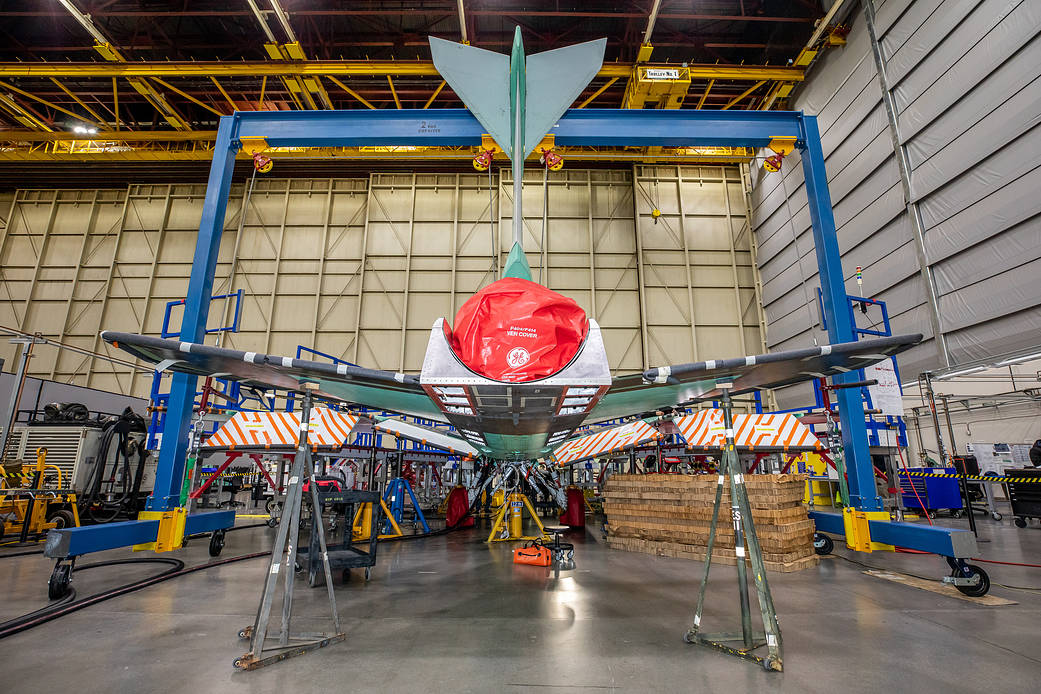
Explore NASA’s History

Related Terms
- Aeronautics Research Mission Directorate
- Ames Research Center
- Armstrong Flight Research Center
- Glenn Research Center
- Langley Research Center
- Low Boom Flight Demonstrator
- Quesst (X-59)

NASA’s X-59 Quiet Supersonic Aircraft Fires Up Engine For The First Time Ahead Of First Flight
X-59’s engine started for testing for the first time.
NASA’s Quesst (“Quiet SuperSonic Technology”) mission recently achieved a key milestone as it began testing the engine that will power the X-59, an experimental supersonic aircraft developed by Skunk Works for NASA’s Low-Boom Flight Demonstrator project.
The first engine tests, which were carried out on Oct. 30, 2024 at Lockheed Martin’s Skunk Works facilities in Palmdale, allow the X-59 team to validate that all aircraft systems work together under the power of the one-of-a-kind aircraft’s engine, as opposed to previous tests that relied on external power sources. These engine tests are a crucial step towards preparing the X-59 for its maiden flight.
According to NASA, the testing is being done in stages, with the first phase involving low-speed engine rotation without ignition to check for leaks and ensure that all systems are communicating properly. After verifying these systems, the team fueled the aircraft and began low-power engine tests to ensure smooth operation without issues or leaks.

Jay Brandon, NASA’s X-59 chief engineer, explained:
This first phase of engine testing was a warmup to confirm everything looked good before running the engine. We then conducted the initial engine start, which took the engine out of preservation mode since its installation. This first start was an opportunity to ensure the engine and related systems—like hydraulics, electrical, and environmental controls—were all working as expected.
Supersonic air travel disappeared with the end of the former-Soviet Tupolev Tu-144 supersonic transport and the famous joint French and English Concorde SST built by Aérospatiale/BAC. The Soviets had little success with their SST program, which predated the first Concorde flight by three months but only remained operational from 1975 until 1978. The Anglo-French Concorde was significantly more successful, flying commercially from 1976 until 2003 when it was retired after a tragic crash on July 25, 2000, at Charles de Gaulle Airport in Paris, France. At the time, neither program achieved a high degree of economic efficiency and both suffered from the constraints of traditional supersonic flight.
New low-boom technology, that works by using an elongated fuselage that (more or less) mutes the sonic boom, should make the X-59 able to fly at 1.4 times the speed of sound, or 925 mph, at 55,000 feet generating a quieter sonic thump than the undesirable and potentially damaging “traditional” loud sonic booms , that are prohibited for commercial flights during overland flight.
More from The Aviationist

35 Years Later, Retired AC-130H Spectre Crews Recount the Action from 1989’s ‘Operation Just Cause’ in Panama

BAE Systems Tests Unique ‘Tilt Body’ STRIX VTOL UAS in Australia

U.S. A-10s Integrate with Philippine A-29B Super Tucanos in Dynamic Force Employment, CAS Exercise

U.S. and Japanese Air Forces Hold Bilateral Exercise Over Sea of Japan with B-52, F-15Js, F-35As and F-22s

Airbus Unveils A320 Flying Testbed with New Nose for ECRS Mk.1 Radar Testing
New low-boom technology, using an extended fuselage to soften the sonic boom aims to produce a gentler “sonic thump” rather than the loud booms that led to bans on supersonic flights over land.

Powered by a modified F414-GE-100 engine with 22,000 pounds of thrust, the X-59 is expected to reach Mach 1.4, or 925 mph, at 55,000 feet. The engine’s unusual placement on top of the aircraft helps reduce noise.
The pilot will fly the aircraft using a unique cockpit design without a conventional forward-facing window. Instead, a central 4K monitor acts as the “window,” giving the pilot a clear view of surrounding air traffic and offering visual guidance for approaches, landings, and takeoffs. This monitor, a key component of the aircraft’s eXternal Visibility System (XVS), shows stitched-together images from two external cameras combined with terrain data from an advanced computer system. While the cockpit includes real windows on the sides and a traditional canopy to help the pilot maintain a view of the horizon, displays below the XVS screen provide essential information on aircraft systems and trajectory to ensure safe flight.

In May this year, an independent Flight Readiness Review board, consisting of experts from various parts of NASA, completed aasessing the X-59 project team’s safety protocols for protecting both the public and staff during ground and flight tests. This review involved a thorough examination of the team’s analysis of potential risks, with particular attention to safety measures and risk assessment.
The Flight Readiness Review was a crucial step in the initial phase of securing flight approval.
The more recent engine tests are part of a broader series of ground checks essential for ensuring safe and effective flight. With these significant testing milestones in progress, the first flight is anticipated in early 2025. The team will continue through critical ground tests, solving any technical issues that may arise with this unique aircraft, aiming to pinpoint a specific date for the first flight as testing progresses.

Testing is taking place at Lockheed Martin’s Skunk Works facility in Palmdale, California. In later phases, the team will test the engine at higher power levels with quick throttle changes and replicate real flight conditions.
The success of these tests represents the culmination of eight years of my career. This is just the start of our journey. It’s like hearing the first note of a symphony—years of teamwork are now being tested, and we’re eager to see the project come together as we progress toward flight. Paul Dees, NASA’s deputy propulsion lead for the X-59.
Following engine tests, the X-59 team will conduct aluminum bird tests, providing data on both regular and simulated failure conditions. They’ll then conduct taxi tests, moving the aircraft on the ground, and complete final steps leading up to its maiden flight.
After the first flight, the aircraft will conduct its first quiet supersonic flight then the Quesst team will conduct several of the aircraft’s flight tests at Skunk Works before transferring it to NASA’s Armstrong Flight Research Center in Edwards, California, which will serve as its base of operations. After the successful completion of the flight tests, NASA plans to fly the X-59 aircraft over several cities across the U.S. to collect data about the sound generated by the experimental airplane and how people perceive it from the ground. NASA will provide that data to the Federal Aviation Administration and international regulators.

Stay Connected
Latest news.

[Updated] U.S. Super Hornet Shot Down in Friendly Fire Over Red Sea

U.S. Air Force F-22A Raptors Return From Rapid Deployment to the Middle East

USMC CH-53E Burns at Camp Pendleton After Conducting Emergency Landing

Spain Signs Memorandum of Understanding with Turkey to Procure Hurjet
Work with us.

Sign in to your account
Remember me
share this!
November 6, 2024
This article has been reviewed according to Science X's editorial process and policies . Editors have highlighted the following attributes while ensuring the content's credibility:
fact-checked
trusted source
X-59 experimental aircraft fires up its engine for first time on its way to takeoff
by Amber Philman-Blair, NASA

NASA's Quesst mission marked a major milestone with the start of tests on the engine that will power the quiet supersonic X-59 experimental aircraft.
These engine-run tests, which began Oct. 30, allow the X-59 team to verify that the aircraft's systems are working together while powered by its own engine. In previous tests, the X-59 used external sources for power. The engine-run tests set the stage for the next phase of the experimental aircraft's progress toward flight .
The X-59 team is conducting the engine-run tests in phases. In this first phase, the engine rotated at a relatively low speed without ignition to check for leaks and ensure all systems are communicating properly. The team then fueled the aircraft and began testing the engine at low power, with the goal of verifying that it and other aircraft systems operate without anomalies or leaks while on engine power.
"The first phase of the engine tests was really a warmup to make sure that everything looked good prior to running the engine," said Jay Brandon, NASA's X-59 chief engineer. "Then we moved to the actual first engine start. That took the engine out of the preservation mode that it had been in since installation on the aircraft. It was the first check to see that it was operating properly and that all the systems it impacted—hydraulics, electrical system, environmental control systems, etc.—seemed to be working."

The X-59 will generate a quieter thump rather than a loud boom while flying faster than the speed of sound. The aircraft is the centerpiece of NASA's Quesst mission, which will gather data on how people perceive these thumps, providing regulators with information that could help lift current bans on commercial supersonic flight over land.
The engine, a modified F414-GE-100, packs 22,000 pounds of thrust, which will enable the X-59 to achieve the desired cruising speed of Mach 1.4 (925 miles per hour) at an altitude of approximately 55,000 feet. It sits in a nontraditional spot—atop the aircraft—to aid in making the X-59 quieter.
Engine runs are part of a series of integrated ground tests needed to ensure safe flight and successful achievement of mission goals. Because of the challenges involved with reaching this critical phase of testing, the X-59's first flight is now expected in early 2025. The team will continue progressing through critical ground tests and address any technical issues discovered with this one-of-a-kind, experimental aircraft. The X-59 team will have a more specific first flight date as these tests are successfully completed.

The testing is taking place at Lockheed Martin's Skunk Works facility in Palmdale, California. During later phases, the team will test the aircraft at high power with rapid throttle changes, followed by simulating the conditions of an actual flight.
"The success of these runs will be the start of the culmination of the last eight years of my career," said Paul Dees, NASA's deputy propulsion lead for the X-59. "This isn't the end of the excitement, but a small steppingstone to the beginning. It's like the first note of a symphony, where years of teamwork behind the scenes are now being put to the test to prove our efforts have been effective, and the notes will continue to play a harmonious song to flight."
After the engine runs, the X-59 team will move to aluminum bird testing, where data will be fed to the aircraft under both normal and failure conditions. The team will then proceed with a series of taxi tests, where the aircraft will be put in motion on the ground. These tests will be followed by final preparations for first flight.
Explore further
Feedback to editors

The internet is rife with fake reviews. Will AI make it worse?

Crossing the Uncanny Valley: Researchers develop technology for lifelike facial expressions in androids
2 hours ago

Self-supervised machine learning adapts to new tasks without retraining
3 hours ago

Nondestructive microwave radar finds moisture hiding inside a building's walls
5 hours ago

Cryptographic protocol enables secure data sharing in floating wind energy sector
11 hours ago

Robot mimics traditional Chinese massage techniques for therapeutic use
Dec 21, 2024

Open-source platform provides a virtual playground for human-AI teaming
Dec 20, 2024

Fake credentials offer novel solution to e-voting challenges

New material for sodium-ion batteries brings affordable, sustainable future within grasp

AI-driven gait analysis bridges health care and security fields
Related stories.

NASA, Lockheed Martin reveal X-59 quiet supersonic aircraft
Jan 15, 2024

NASA's X-59 progresses through tests on the path to flight
Aug 13, 2024

NASA's X-59 passes milestone toward safe first flight
May 16, 2024

NASA, GE aerospace advancing hybrid-electric airliners with HyTEC
Sep 17, 2024

Cathay inspects A350 fleet after engine component failure
Sep 3, 2024

Boeing suspends 777X flight tests after part failure
Aug 21, 2024
Recommended for you

Thermal evaporation emerges as a promising strategy for scalable solid-state battery production

New method enables mass production of flexible diamond membranes
Dec 19, 2024

New research validates performance enhancement and injury risk reduction from back-assist exosuits
Let us know if there is a problem with our content.
Use this form if you have come across a typo, inaccuracy or would like to send an edit request for the content on this page. For general inquiries, please use our contact form . For general feedback, use the public comments section below (please adhere to guidelines ).
Please select the most appropriate category to facilitate processing of your request
Thank you for taking time to provide your feedback to the editors.
Your feedback is important to us. However, we do not guarantee individual replies due to the high volume of messages.
E-mail the story
Your email address is used only to let the recipient know who sent the email. Neither your address nor the recipient's address will be used for any other purpose. The information you enter will appear in your e-mail message and is not retained by Tech Xplore in any form.
Your Privacy
This site uses cookies to assist with navigation, analyse your use of our services, collect data for ads personalisation and provide content from third parties. By using our site, you acknowledge that you have read and understand our Privacy Policy and Terms of Use .
E-mail newsletter

IMAGES
COMMENTS
Oct 12, 2023 · NASA’s Quesst mission has adjusted the scheduled first flight of its X-59 quiet supersonic aircraft to 2024. A one-of-a-kind experimental aircraft, the X-59 has required complex engineering from NASA researchers working with prime contractor Lockheed Martin Skunk Works.
The Lockheed Martin X-59 Quesst ("Quiet SuperSonic Technology"), sometimes styled QueSST, is an American experimental supersonic aircraft under development by Skunk Works for NASA's Low-Boom Flight Demonstrator project. [2] Preliminary design started in February 2016, with the X-59 planned to begin flight testing in 2021.
Nov 7, 2024 · Although initially projected to begin flight tests in 2021, the schedule has been adjusted, with the first flight now expected in early 2025. The X-59’s design includes an enhanced flight vision system (EVS) with an external vision system (XVS) that provides a forward view to compensate for the limited visibility due to the aircraft’s ...
Oct 30, 2023 · The move allowed the X-59 team to perform safety and structural testing, critical steps toward first flight. Credit: Lockheed Martin. Aircraft Made up of Parts from Existing Aircraft, Making Safety Paramount. Notably, the X-59 is not an entirely new airframe from top to bottom.
Jul 18, 2024 · NASA and Lockheed Martin publicly unveil the X-59 quiet supersonic research aircraft at a ceremony in Lockheed Martin’s Skunk Works facility in Palmdale, California. The X-59 is the centerpiece of NASA’s Quesst mission, which seeks to solve one of the major barriers to supersonic flight over land, currently banned in the United States, by ...
A group of 1950s NACA research aircraft. As used here, an experimental or research and development aircraft, sometimes also called an X-plane, is one which is designed or substantially adapted to investigate novel flight technologies. [1] [2] [3]
Nov 6, 2024 · The engine-run tests set the stage for the next phase of the experimental aircraft’s progress toward flight. The X-59 team is conducting the engine-run tests in phases. In this first phase, the engine rotated at a relatively low speed without ignition to check for leaks and ensure all systems are communicating properly.
Nov 7, 2024 · After the successful completion of the flight tests, NASA plans to fly the X-59 aircraft over several cities across the U.S. to collect data about the sound generated by the experimental airplane ...
Nov 6, 2024 · The engine-run tests set the stage for the next phase of the experimental aircraft's progress toward flight. The X-59 team is conducting the engine-run tests in phases. In this first phase, the engine rotated at a relatively low speed without ignition to check for leaks and ensure all systems are communicating properly.
Aug 18, 2024 · NASA ’s experimental X-59 aircraft is in the final stages of testing before its first flight, focusing on ensuring it can surpass the speed of sound without the disruptive sonic boom. The tests range from structural integrity assessments to control system evaluations, setting the stage for a new era in quiet supersonic travel. NASA’s X-59 ...